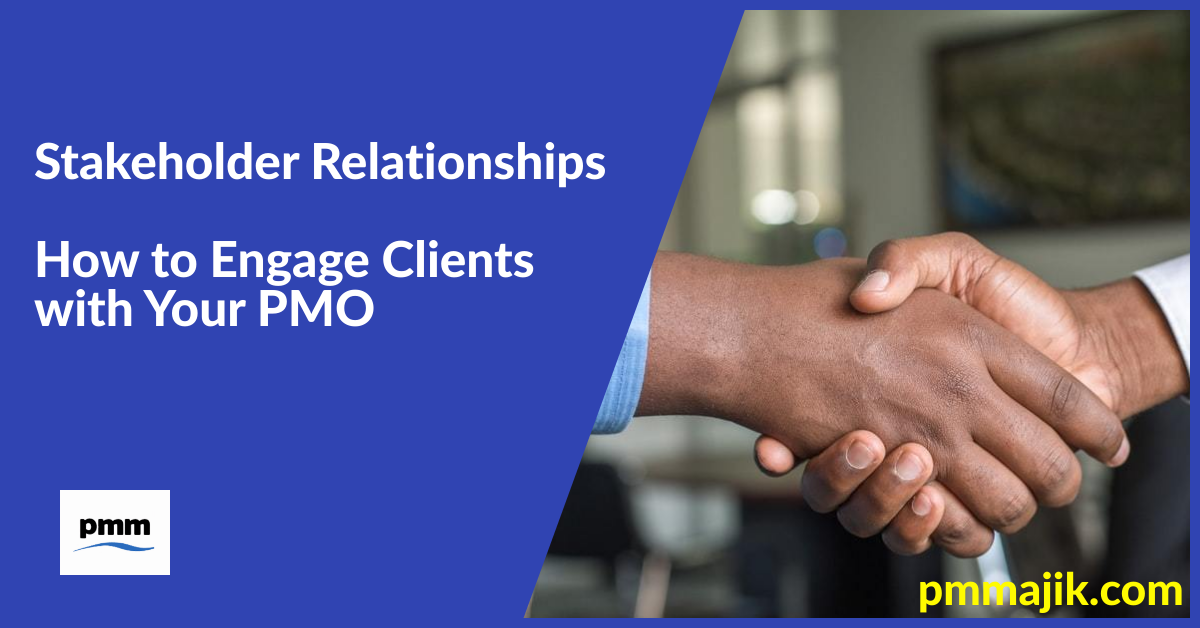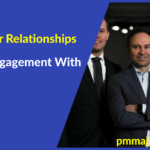Along with creating relationships across the business, your project management office (PMO) needs to look outwards with your stakeholder relationships and consider how to engage clients with your PMO.
We’ve already looked at engaging up the chain with your PMO sponsor and the C-suite, and down the hierarchy to work with project managers and their teams. However, relationships with clients is paramount.
The client is the person who will be on the receiving end of any project that your PMO oversees. It can be easy to get bogged down in the details of the project and ensuring each project hits KPIs, but the most important thing in the process is the client.
To help you plan your engagement strategy with your project clients, we’re covering:
- Why your PMO needs to build and sustain client relationships
- What you can do to create strong client relationships with your PMO
- Practical actions you can introduce to your PMO to increase client engagement
Why are client relationships important to a PMO?
To ensure the long-term viability of your projects and the business you work in, clients need to be satisfied with the products they receive.
The client can be external to the business, such as the company that has requested a piece of software or a new piece of machinery. Your client can also be internal, such as your accounting departing receiving a new piece of software or your delivery drivers having their vehicles retrofitted.
Whoever the client is, it’s essential to bring them into the project process from its very inception. The reasons for that include:
- Managing client expectations – when you have a strong relationship with clients, you can deliver good and bad news better, and by talking to them often, they will have a better understanding of the project overall.
- Monitor project activity – your PMO’s role may be more supervisory in terms of client communications, ensuring your project managers are keeping clients informed.You can stay on top of progress by being involved with the client relationship.
- Reduce scope creep – by keeping the client engaged with the project, you can ensure they don’t start wanting more than what was agreed for the project – everything is clear from the beginning.
Whether your PMO is in charge of liaising with the client directly or monitoring the comms between the project or account manager and the client, you can still implement strategies that will build and nurture relationships.
How can a PMO build relationships and engagement with clients?
There are significant benefits to the PMO being involved with client relationships. Even if the role is only to oversee the client communications with the project or account manager, you need to have processes and a plan in place for each project.
Have a customer roadmap
A customer roadmap should include all the touchpoints for the client within the project, including if they need to be involved in risk assessments and approving project milestones.
Your PMO should be in charge of the roadmap and ensure that project managers are adhering to it. Make it simple and accessible and have the client sign off on it before the project kicks off.
Agree metrics for the client
Each project will have KPIs, but these may not be suitable or understandable for the client. At the start of a project, devise a set of targets that can be reported to the project client so they can track progress.
Create KPIs along the lines of:
- Transparency, such as the data you’ll give them
- Predictability, including the timeline for the project
- Reliability, which covers receiving regular updates
- Return on investment, so the client can be aware of time and budget changes
Layout the deliverables
From the outset of a project, the final deliverables need to be clear. These should be laid out in full agreement with the client.
Focus communications and updates on the deliverables. Razor-sharp focus on what the client will receive will remove the possibility for misunderstandings and scope or feature creep.
How can a PMO engage with clients?
Your PMO may not directly communicate with project clients often, but you still need to ensure the relationship is well-managed. Knowing how to engage clients with your PMO will ensure both sides know what to expect as an end result, and the clients will be satisfied with what gets delivered.






